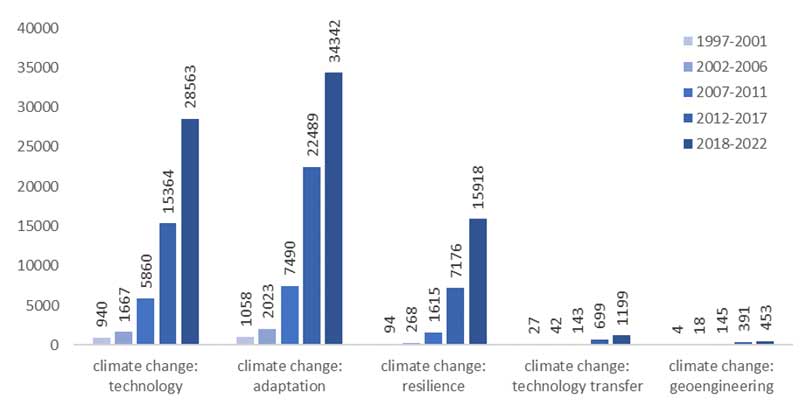If the signatory countries of the 2015 Paris Agreements were students, they would be anxiously watching this November 30. framework At lecture of the Parties (COP) 28 of the United Nations Framework Convention on Climate Change (UNFCCC) being held in Dubai, they will have to show the results of the assessment The results of the five-year review, which they have undergone for the first time under rules agreed upon at COP24 in Katowice, are to be presented to the Parties (COP) 28. Whether we look to the future with hope or only with expectation will depend on grade .
Paris basically established three subjects: finance, technology and capacity.
The first is included in article 9 of the Agreements with the obligation of developed countries to finance development in the most vulnerable countries. To evaluate this financing, it would be sufficient to compile an inventory of what has been done by and in each country.
Commitments have already been announced and will be presented in Dubai. For example, that of the EU, which promises to contribute hundreds of millions of euros per year. Will sufficient resources have been allocated, or will the assessment be based on commitments and promises of uncertain fulfillment? We will soon find out.
The tasks for Science
The second subject is more technical and scientific: to develop and transfer technology to reduce emissions and facilitate resilience.
The latter assumes that we would have passed the point where we could still avoid substantial changes in the environment and would have to deal with them.
The scientific world has been doing its homework, with almost 300,000 scientific articles indexed on climate change in the last five years alone: 46% more than in the previous five years. But the relative increase in papers dealing with adaptation (53%), technology (86%) and its transfer (72%) and especially resilience (122%) is much greater.
The latter takes over from adaptation: once the latter is assumed to be inevitable, it seems that it is time to investigate what treatments are needed for recovery.
Potential geoengineering solutions, despite their very high risks and uncertainties, are gaining ground at least at the level of academic discussion.
But it would be more than desirable that in assessment a synthesis of these options be put on the table with equanimity for their careful and profound examination, as absent of sectarianism or external interests as possible.
|

|
| issue of scientific articles published in JCR-indexed journals by five-year period since 1997. The author, from data from Web of Science |
Copy (nature) for approve
In this sense, seemingly more affordable proposals with quicker results gain importance.
The control of methane emissions, much more potent than CO₂ as a greenhouse gas, is emerging as a possible effective option. With a life average in the atmosphere an order of magnitude shorter, effective control of at least these localized emissions would be noticed in a few years, compared to the decades that CO₂ will make us wait.
Among other reports, signatory countries will submit their Nationally Determined Contributions (NDCs) at COP28, which will have to include the inventory of methane emissions, but these data may sometimes be unreliable or non-existent.
However, the latest technology now makes it feasible to detect emission cores globally, facilitating their control.
Although monitoring diffuse emissions may seem more difficult, it is worth considering without prejudice whether it is time for substantial interventions - for example, the use of soil rich in methanotrophic microorganisms to cover landfills or iron fertilization of marine aerosol in the wake of cargo ships - to try to tip the balance towards reducing global levels, which are now steadily increasing.
That said, improved removal should never "whitewash" emission control, especially if it means greatly altering the functioning of bacterial ecosystems.
The consequences of these interventions are all the more uncertain the longer the time frame because nature is full of chaotic systems that are more sensitive to a misstep than a game of chess.
development Adaptive Capacity Building
Building resilience, adaptive capacity and emission control in the least developed countries is the third subject, but this one not only repeats course but cancels call.
Institutional support measures for this promotion were agreed as early as 2018 in Katowice to be reviewed the following year at COP25 in Madrid.
The discreet result The discrete nature of the review led (perhaps predictably) to extend these activities for five years. The rules for their review will not be agreed upon for another year. However, it is to be expected that the financial commitments that will be announced at COP28 will also have this promotion as goal .
Perhaps it is also the rhythms of the UNFCCC since its creation at the Rio summit three decades ago (1992), and especially since the 1997 Kyotoprotocol , where the Convention acquired the operational mechanisms to limit and reduce greenhouse gases, that would merit a review to help fulfill in a timely manner its mandate to support the already more than urgent global response to the consequences of climate change.
............................................
 Arturo Ariño
Arturo Ariño
researcher from Biodiversity and Environment Institute of the University of Navarra
01.12.2023
This article was originally published in The Conversation. Read the original.